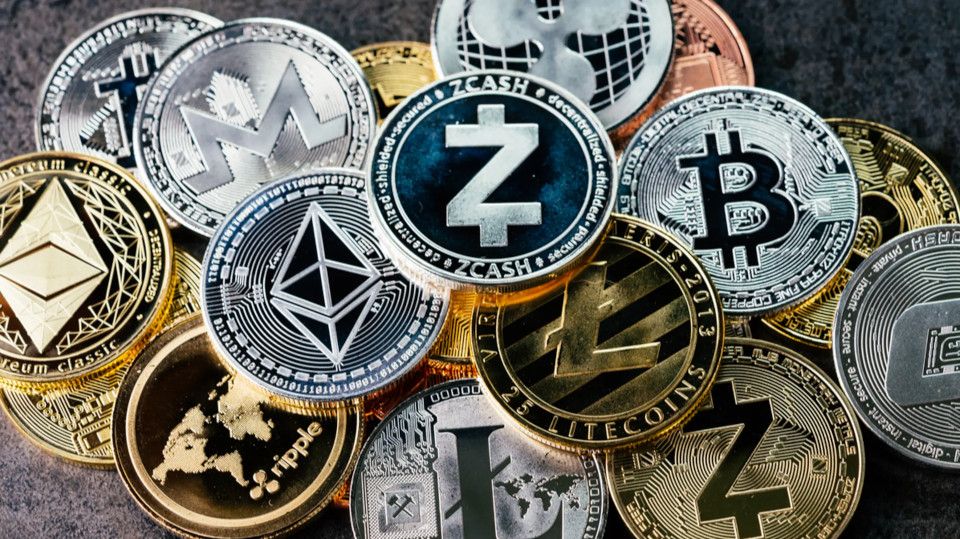
Chances are you’ve heard of cryptocurrency: Bitcoin, Ethereum, and Dogecoin have all become words we hear on the news or read online. But what is cryptocurrency exactly, and how does it work?
Cryptocurrency vs. Regular Currency
Right now, you hopefully have some money in your pocket in the form of dollars, euros, or rupees, depending on what your country gives out as currency. This money is valued by a delicate system operated partly by governments and specific market mechanisms involved in getting here.
This article from The Balance serves as a solid primer, though.
Cryptocurrency is different from this and radically. Instead of having a physical presence—the notes and coins in your pocket—it exists entirely digitally, without the power of a government to back it. Instead, it relies on free-market mechanisms to determine its value: what people are willing to pay for it determines its worth.
Of course, without a central issuing authority, inflation could become a real issue: anybody could claim at any time that they have a thousand or a million crypto bucks, and there’s nothing anybody could do to stop them. You’ll get arrested for counterfeiting if you create your own U.S. dollars. If you make a cryptocurrency out of thin air, nothing will happen.
The Cryptocurrency Blockchain
This problem was one of the most significant issues surrounding cryptocurrencies until Satoshi Nakamoto—likely a pseudonym for a person or group nobody knows for sure except Satoshi—came up with the blockchain. It’s a pretty complicated piece of technology, but it boils down to being an online ledger that anybody can view but not everybody can edit.

Much like the ledger that an old-school accountant would keep (that book Ebenezer Scrooge is hunched over is a ledger, for example), the blockchain records how many there are of any given cryptocurrency and who owns and spends them. It does so in so-called blocks, hence the name “blockchain.” Below is one example of a ledger in action.

The ledger keeps track of how much of any given cryptocurrency is spent (Bitcoin in the above example), when it’s finished, and who paid it. Though a pseudonym protects your identity—random numbers and letters called a hash—when using most cryptocurrencies, none except a few exceptions are truly anonymous. Even Bitcoin isn’t “anonymous,” as many people think it is.
RELATED: How Anonymous Is Bitcoin?
Putting the Crypto in Cryptocurrency
The ledger is only one side of the equation. While it’s very nice to have a record of the crypto coins going in or out, ledgers can be easily tampered with. You’d use an eraser or some white-out to make expenses disappear in the old days. Now, you can do much the same with some advanced tools.
One way to guard against these issues is the openness of blockchain technology. If everybody can see what’s happening at any time, it should be easy to figure out if something hinky is happening quickly. The other way is to harness the power of cryptography or to encode the data of entries and then decode them as needed.
In the case of cryptocurrencies, this is usually done by using passwords to make sure a user is who they say they are, or instead that their wallet—where cryptocurrencies are stored—is the one that belongs to them. As we saw before, hashing the username for a wallet makes it essential to ensure that users remember their passwords.
Several examples of people forgetting their passwords and locking themselves out of their crypto fortune.
Buying and Mining Cryptocurrencies
With the theory of cryptocurrencies out of the way, let’s look at how they work in practice. To get started with cryptocurrencies, you must go to an exchange like Coinbase or Kraken to buy your cryptocurrency of choice using regular money.
However, considering the insane amount of computing power needed to process the data necessary for verifying the new blocks, there’s a chance your custom-built gaming rig will have smoke billowing out of it before you mine even the equivalent of a few bucks. There’s so much processing power needed that mining is no longer the field of enthusiasts but rather of whole companies. Even criminal gangs are getting in on the action—and making millions.
Storing and Spending Bitcoin
Assuming you just bought your cryptocurrency of choice, you still need a place to store it: unlike cash, Bitcoin and Ethereum can’t be sewn into your mattress. You’ll need a wallet, which comes in software and hardware form and can store your particular blockchain information.
A software wallet is often offered by exchanges—though you can subscribe to a separate one, the Bitcoin site has a selection—and is simply an online service where Bitcoin can be stored. Many have good security, though they have been falling prey to hackers more and more often.
The alternative is a hardware wallet, a special USB stick that keeps track of the blockchain for you. Examples include Trezor and Ledger, which are pretty nifty, though your crypto is gone if you lose or forget your password.

Once you’ve settled on a wallet, you must decide what to spend it on. Many online services will let you pay in cryptocurrency, and doing so is pretty straightforward: click the right buttons, and you should be okay. Alternatively, you could just let it sit in your wallet and watch as its price goes higher and higher (or plummets completely).